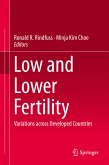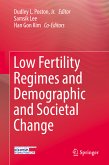The countries examined are not only diverse geographically, historically, and culturally, but also have different policies and institutions in place. They include six very-low-fertility countries (Austria, Czech Republic, Hungary, Italy, Spain, and Taiwan) and four that have close to replacement-level fertility (United Kingdom, Norway, Canada, and France).
Although fertility has gone down in all these countries over the past 50 years, the chapters examine the institutional, policy, and cultural factors that have led some countries to have much lower fertility rates than others. In addition, the final chapter provides a cross-country comparison of individual perceptions about obs
tacles to fertility, based on survey data, and government support for families. This broad overview, along with a general introduction, helps put the specific country papers in context.
As birth rates continue to decline, there is increasing concern about the fate of social welfare systems, including healthcare and programs for the elderly. This book will help readers to better understand the root causes of such problems with its insightful discussion on how a country's institutions, policies, and culture shape fertility trends and levels.
Dieser Download kann aus rechtlichen Gründen nur mit Rechnungsadresse in A, B, BG, CY, CZ, D, DK, EW, E, FIN, F, GR, HR, H, IRL, I, LT, L, LR, M, NL, PL, P, R, S, SLO, SK ausgeliefert werden.
Hinweis: Dieser Artikel kann nur an eine deutsche Lieferadresse ausgeliefert werden.









